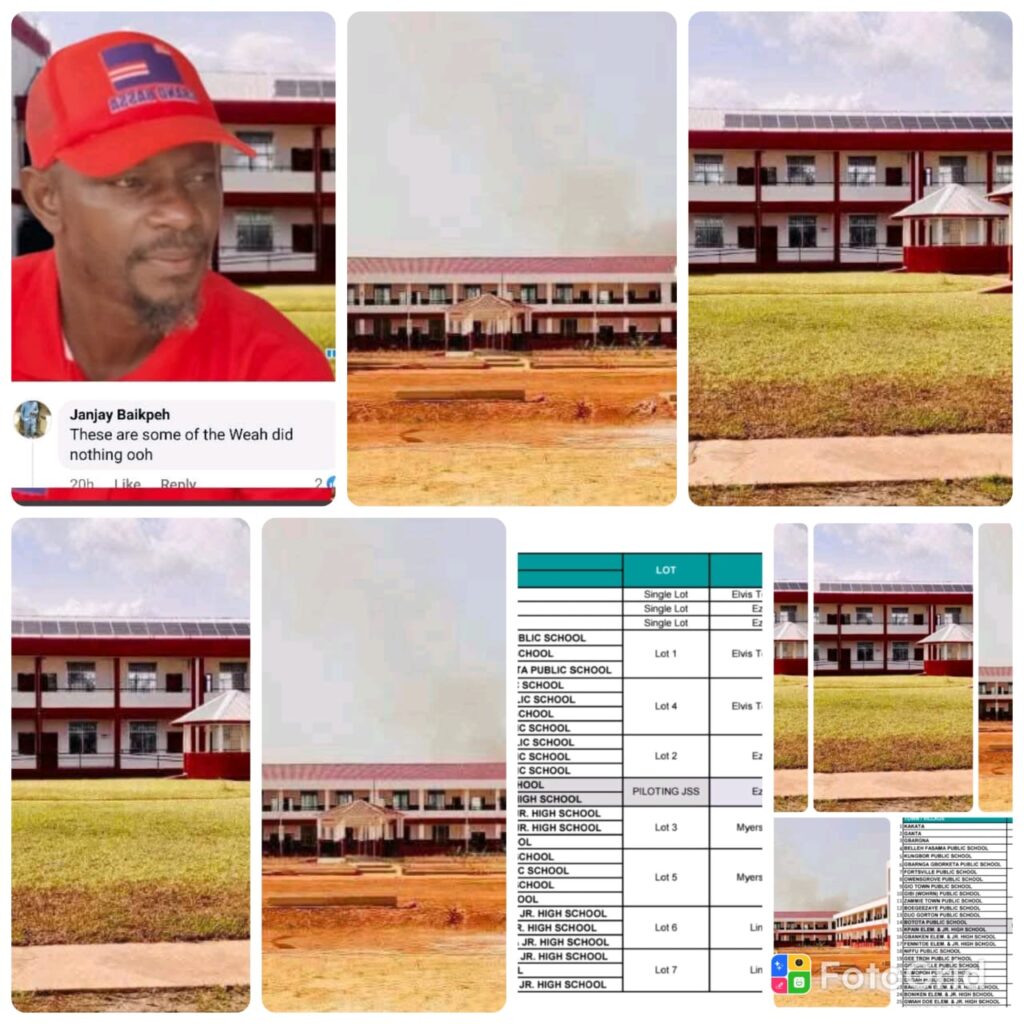As Liberia dedicates two new model senior secondary schools in Gbarnga (Bong County) and Ganta (Nimba County) under the World Bank-funded Improving Results in Secondary Education (IRISE) Project, a political storm is brewing over who should take credit for the $47 million initiative. Supporters of both former President George M. Weah and current President Joseph Nyuma Boakai are jostling for recognition, turning a national education milestone into a partisan flashpoint.
At the core of the debate lies a legitimate, if uncomfortable, question: Who truly deserves the accolades for one of Liberia’s most ambitious education projects in decades—the visionary initiator or the executing authority?
From Concept to Construction: Weah’s Vision
The IRISE Project was born out of a 2019 concept paper crafted by the Ministry of Education during the Weah administration. At the time, alarming data painted a dire picture: only 40% of girls aged 15–19 were still in school, and in rural areas, dropout rates for girls approached 60%. The project aimed to address a constellation of barriers to education—poor infrastructure, lack of senior secondary schools in remote regions, and gender disparities in enrollment and retention.
President Weah’s administration secured funding from the International Development Association (IDA) and launched groundbreaking ceremonies for new schools in Nimba, Bong, and Margibi Counties between 2021 and 2022. For many within the Coalition for Democratic Change (CDC), this alone establishes Weah’s government as the rightful author of IRISE’s legacy.
“This is Weah’s project being rebranded,” a CDC-affiliated leader in Nimba said over the weekend. “We laid the foundation—literally and figuratively.”
Boakai’s Execution: A Delivery President?
Fast forward to mid-2025, and under President Boakai’s Unity Party-led administration, two of the three new schools are being officially opened. The dedication ceremonies in Bong and Nimba this week have been strategically aligned with the government’s ARREST Agenda, which prioritizes Access, Roads, Education, Sanitation, and Tourism. From the Unity Party’s perspective, the distinction is clear: conception is one thing; delivery is another.
“What matters is not who envisioned the project but who delivered it,” a senior official from the Ministry of Education stated, pointing out the extensive coordination and oversight required to push the initiative past bureaucratic bottlenecks and COVID-era delays.
President Boakai’s allies argue that successful project implementation—particularly in a system notorious for slow or stalled public infrastructure—is a feat worthy of recognition in its own right.
Beyond Buildings: Lingering Systemic Challenges
While the credit feud grabs headlines, education experts caution against losing sight of deeper structural problems within Liberia’s secondary education system. The IRISE initiative encompasses more than just buildings: it addresses four key pillars—access and infrastructure, girls’ retention, teacher workforce reform, and education system strengthening.
To date, the program has: Renovated 156 existing schools and expanded 25 others to include senior secondary grades. Awarded over 3,000 scholarships to girls in high-risk dropout counties. Identified the need to train 1,500 volunteer teachers, many of whom remain uncertified.
Yet, troubling disparities remain. Nationwide, only 45% of current teachers are certified, and in some rural schools, student-teacher ratios exceed 100:1.
“School walls don’t teach students,” remarked an education policy analyst. “Until we fix the teacher pipeline, we’re decorating failures.” The €10.5 million estimated to professionally train these instructors remains unfunded, raising alarms about the long-term sustainability of the new schools.
Margibi’s Stalled Site: A Missed Opportunity
The IRISE school in Margibi County serves as a cautionary tale. Though it broke ground in October 2022, delays plagued the project throughout 2024. In 2025, it was reassigned to International Consolidated Contractors (ICC), which now aims to complete the 15-classroom facility by early 2026.
The sluggish pace has frustrated local leaders and residents alike. “Why is Margibi languishing while Bong and Nimba celebrate?” asked one educator in Kakata. Some critics accuse the Boakai administration of neglect, while others point to structural issues inherited from the previous regime.
Credit vs. Continuity: What the Public Actually Cares About
Public sentiment, meanwhile, seems far less concerned with which administration gets its name etched into a cornerstone and more focused on outcomes.
“The public doesn’t care whose name is on the plaque,” said Grand Bassa Superintendent Janjay Baikpeh. “They care whether their children are in school, learning, and thriving.”

Former Deputy Education Minister Latim Dathong echoed this spirit in a public statement celebrating the school openings. Reflecting on his role in the original World Bank delegation that helped shape IRISE, Dathong expressed satisfaction with the collaborative nature of the effort.
“These schools are not just buildings,” he wrote. “They represent the hard work, late nights, and unwavering commitment of a team that believed in better education for Liberia’s children.”
Importantly, Dathong acknowledged both administrations. “Together, we did it for the children of Liberia,” he said, lauding President Boakai for his leadership and President Weah for his vision.
Policy Path Forward
As Liberia continues its quest to build a resilient education system, analysts recommend a set of immediate priorities: Accelerate Completion in Margibi – Publish updated project timelines and ensure accountability in execution, Invest in Teacher Training – Scale up certification and mentorship programs to address rural teacher shortages, Strengthen Monitoring Systems – Publicly release Disbursement-Linked Indicator (DLI) data and track school performance metrics, Combat Cultural Barriers – Expand gender-responsive initiatives that challenge early marriage and domestic labor, Enhance Inter-Ministerial Coordination – Foster partnerships between Education, Gender, and Public Works ministries for holistic outcomes.
Conclusion: An Opportunity for Unity
The IRISE project stands as a rare bipartisan investment in Liberia’s future—a bridge between administrations that, ideally, should model how governance can transcend electoral cycles.
As President Boakai cuts the ribbons in Gbarnga and Ganta, and as echoes of Weah’s policies reverberate in the architecture, the real winners are the students who will walk through those school gates. If Liberia’s political class can shift focus from partisan branding to sustained delivery, the nation may finally inch closer to equitable, quality education for all. “Let the children be the beneficiaries—not our egos,” one education official aptly summarized.




